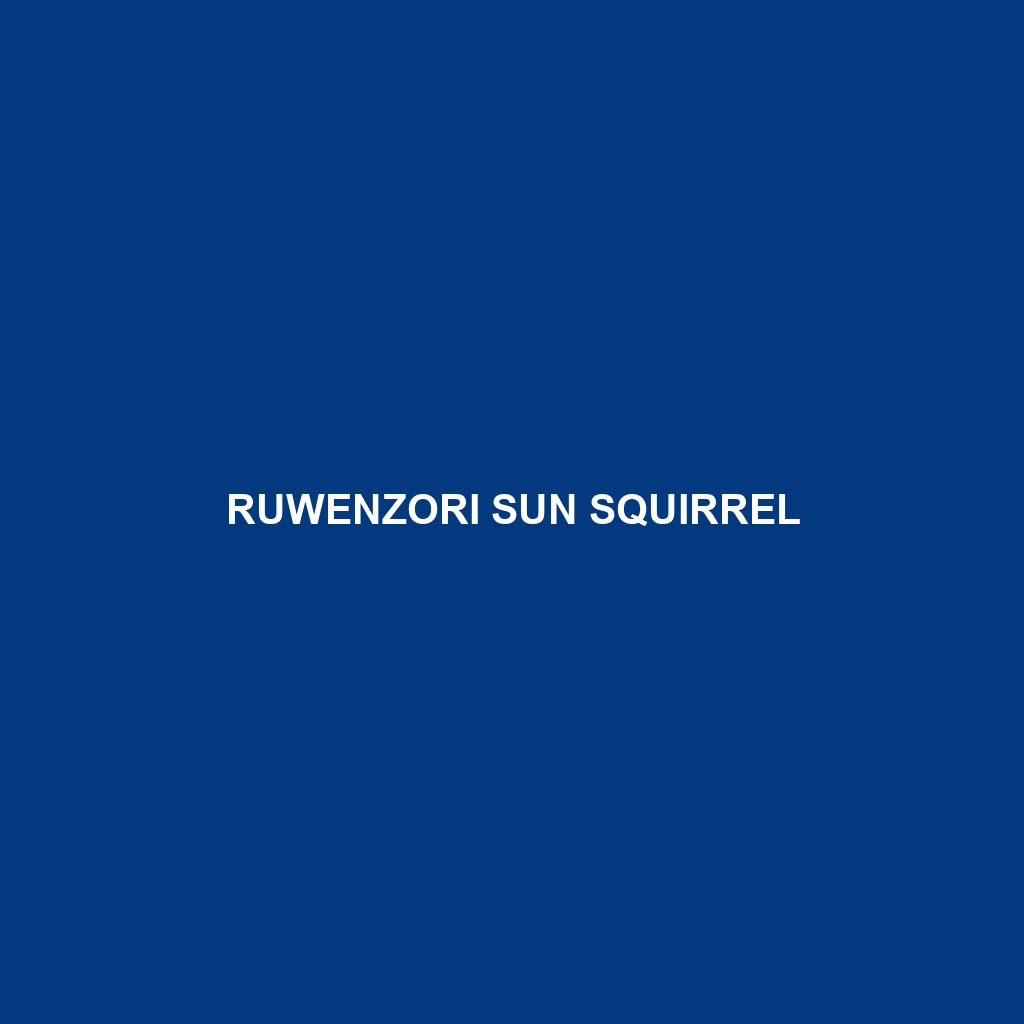Ruwenzori Sun Squirrel: An Overview
Common Name: Ruwenzori Sun Squirrel
Scientific Name: Heliosciurus ruwenzori
Habitat
The Ruwenzori Sun Squirrel is primarily found in the lush montane forests of the Ruwenzori Mountain Range in Uganda and the Democratic Republic of the Congo. These squirrels thrive in tropical and subtropical environments, often inhabiting bamboo forests and the edges of cloud forests, where they benefit from the dense canopy and abundant food sources.
Physical Characteristics
This medium-sized rodent typically weighs between 200 to 300 grams and possesses a body length of approximately 25 to 30 centimeters, including a bushy tail that adds another 25 centimeters. The Ruwenzori Sun Squirrel is characterized by its striking reddish-brown to yellowish fur with a darker coloration on the back and a lighter underbelly. One of its most distinctive features is its long, tufted ears and large, expressive eyes, which enhance its sensory abilities within the dense forest habitat.
Behavior
Ruwenzori Sun Squirrels are diurnal creatures, meaning they are most active during the day. They are social animals that live in small groups and exhibit playful behaviors, including chasing and grooming each other. Their agility allows them to navigate the treetops with ease, where they construct nests from leaves and twigs. Communication among these squirrels includes vocalizations and tail movements, which they use to convey warnings or maintain social bonds.
Diet
The diet of the Ruwenzori Sun Squirrel primarily consists of fruits, nuts, seeds, and flowers, making them important seed dispersers in their ecosystem. They are known to feed on a variety of local plants, which helps maintain the health of their forest habitat. These squirrels have developed strong incisors that allow them to efficiently crack open hard nuts and seeds.
Reproduction
Ruwenzori Sun Squirrels typically breed once or twice a year, with peak breeding seasons often observed during the rainy season when food is abundant. After a gestation period of about 45 to 50 days, females give birth to litters consisting of 2 to 4 offspring. The young are born blind and helpless, relying on their mother for care until they are weaned around 8 weeks old, after which they begin to explore their surroundings.
Conservation Status
According to the International Union for Conservation of Nature (IUCN), the Ruwenzori Sun Squirrel is currently listed as vulnerable, primarily due to habitat loss from deforestation and human encroachment. Conservation efforts are essential to protect their populations and the integrity of their forest habitats in the Ruwenzori Mountain Range.
Interesting Facts
The Ruwenzori Sun Squirrel is known for its striking agility and acrobatic skills, allowing it to leap from branch to branch effortlessly. They have a unique behavior of sunbathing, which helps them regulate their body temperature and dry their fur after rain.
Role in Ecosystem
As a vital component of their forest ecosystem, Ruwenzori Sun Squirrels play an important role in seed dispersal, which contributes to plant diversity and forest regeneration. Their presence in the ecosystem supports a variety of other wildlife, including predators and other plant and animal species that rely on healthy forest habitats.
